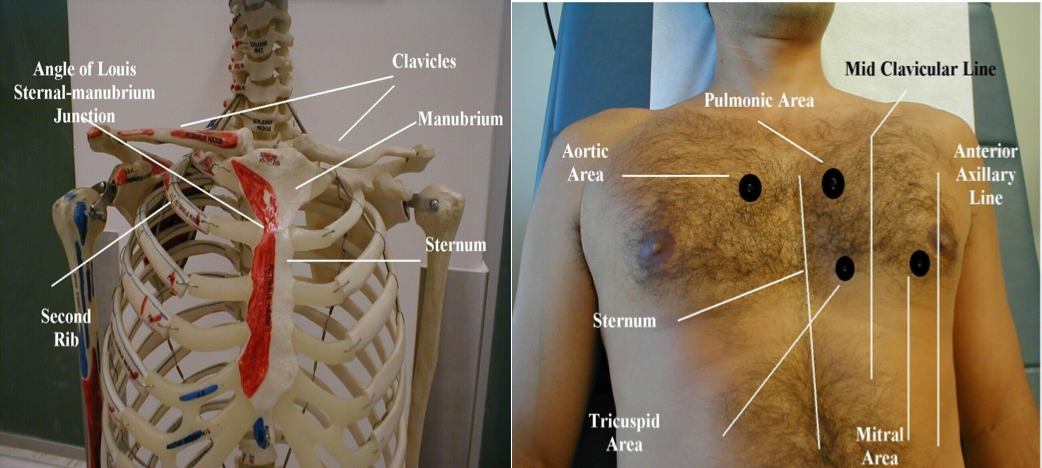Inspection:
- Apex beat .
- left parasternal movement due to right ventricular hypertrophy.
- pulsation in 2d left ICS 2ry to enlarged PA.
- epigastric pulsation 2ry to expanded abdominal aorta
Palpation:
- Apex beat 5th ICS midclavicular line.
- Left parasternal heave 2nd ICS 2ry to RVH.
- Thrill (vibrating sensation indicates palpable murmur).
Auscultation:
- bell to detect low-pitched sounds , press lightly against the skin
- diaphragm detect high-pitched sounds press firmly against the skin
Remember –Don’t Examine Thru Clothing or “Snake” Stethoscope Down Shirts/Gowns !
 - Sitting and Leaning forward
- Lying supine
- Lying in left lateral decubitus position
- Sitting and Leaning forward
- Lying supine
- Lying in left lateral decubitus position
Areas of Auscultation - Aortic valve - Pulmonic valve - Tricuspid valve - Mitral valve/ apex of the heart
Valves And Surface Anatomy
Areas of auscultation correlate w/rough location of each valve
•Where you listen will determine what you hear!

Auscultation Technique
- Start over Aortic area 2nd Right Intercostal Space (ICS) –Use Angle of Louis as landmark
- Pulmonic area (2ndL ICS)
- Inch down sternal border Tricuspid area (4thL ICS)
- Inch towards Mitral area (5thICS, mid-clavicular)
Listen in ~ 6 places-precise total doesn’t matter –gives you sense of change In sounds as change location